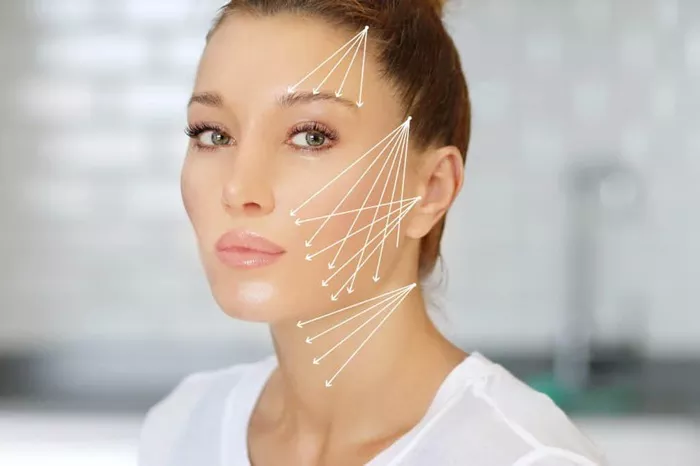The beauty and aesthetics industry is constantly evolving, with innovative treatments emerging to offer non-surgical alternatives for facial rejuvenation. One such treatment gaining popularity is the Sugar Thread Lift. This minimally invasive procedure provides a lifting effect, improves skin texture, and stimulates collagen production without the need for traditional surgery. In this article, we will delve into the details of what a Sugar Thread Lift entails, its benefits, procedure, recovery, and more.
Understanding the Concept
Origins and Development
The Sugar Thread Lift is part of a broader category of treatments known as thread lifts. Thread lifts have been used for several decades, but the introduction of polydioxanone (PDO) threads, which dissolve naturally in the body, marked a significant advancement. Sugar threads are a type of PDO thread, named for their composition derived from sugar molecules. This innovative material enhances the safety and effectiveness of the procedure.
How It Works
Sugar threads are inserted into the skin using fine needles. These threads act as scaffolding, lifting sagging tissues and stimulating the body’s natural healing response. As the threads dissolve over time, they promote collagen production, leading to firmer, more youthful skin.
Benefits of Sugar Thread Lift
Non-Surgical Approach
One of the primary benefits of the Sugar Thread Lift is that it offers a non-surgical alternative to traditional facelifts. This means no incisions, reduced risk of complications, and a quicker recovery period.
Immediate and Long-Term Results
Patients often notice an immediate lifting effect after the procedure. As the sugar threads dissolve and stimulate collagen production, the skin continues to improve over the following months, providing long-term benefits.
Versatility
The Sugar Thread Lift can be used to address various areas of the face, including the cheeks, jawline, neck, and even the brows. This versatility makes it a popular choice for individuals seeking comprehensive facial rejuvenation.
Minimal Downtime
Compared to surgical facelifts, the downtime associated with a Sugar Thread Lift is minimal. Most patients can return to their daily activities within a few days, making it a convenient option for those with busy lifestyles.
See also: What is nova thread lift: Everything You Need To Know
The Procedure
Pre-Procedure Consultation
Before undergoing a Sugar Thread Lift, patients have a consultation with a qualified practitioner. During this consultation, the practitioner assesses the patient’s skin condition, discusses their aesthetic goals, and explains the procedure in detail.
During the Procedure
The Sugar Thread Lift procedure typically takes about 30 to 60 minutes, depending on the areas being treated. The practitioner begins by cleansing the skin and applying a local anesthetic to ensure comfort. Fine needles are then used to insert the sugar threads into the targeted areas. The threads are carefully positioned to lift and support the skin.
Post-Procedure Care
After the procedure, patients may experience mild swelling, bruising, or discomfort, which usually resolves within a few days. Practitioners provide post-procedure care instructions, including avoiding strenuous activities and keeping the treated areas clean and protected.
Recovery and Results
Immediate Aftercare
Following the Sugar Thread Lift, patients should follow their practitioner’s aftercare instructions diligently. This may include using cold compresses to reduce swelling, avoiding touching the treated areas, and refraining from excessive facial movements.
Long-Term Care
To maintain and enhance the results of the Sugar Thread Lift, patients are encouraged to follow a comprehensive skincare regimen. This may involve using moisturizers, sunscreens, and other products recommended by their practitioner.
Risks and Considerations
Potential Side Effects
While the Sugar Thread Lift is considered safe, there are potential side effects to be aware of. These may include temporary bruising, swelling, infection, or asymmetry. Choosing a skilled and experienced practitioner can minimize these risks.
Suitability
Not everyone is a suitable candidate for a Sugar Thread Lift. Individuals with severe skin laxity, certain medical conditions, or unrealistic expectations may need to explore alternative treatments. A thorough consultation with a qualified practitioner will determine the best approach for each individual.
Comparing Sugar Thread Lift to Other Treatments
Traditional Facelift
Compared to a traditional facelift, the Sugar Thread Lift offers a less invasive option with reduced recovery time. However, the results may not be as dramatic or long-lasting as those achieved with surgery.
Dermal Fillers
Dermal fillers are another non-surgical option for facial rejuvenation. While fillers add volume and smooth wrinkles, the Sugar Thread Lift provides a lifting effect and stimulates collagen production, addressing skin laxity more effectively.
Botox
Botox is primarily used to relax facial muscles and reduce the appearance of dynamic wrinkles. The Sugar Thread Lift, on the other hand, targets skin laxity and provides a lifting effect, making it a complementary treatment to Botox.
Conclusion
The Sugar Thread Lift is a revolutionary treatment in the field of non-surgical facial rejuvenation. Offering immediate and long-term benefits, minimal downtime, and versatility, it has become a popular choice for individuals seeking to enhance their appearance without undergoing surgery. As with any cosmetic procedure, it is essential to choose a qualified practitioner and have realistic expectations. By understanding the intricacies of the Sugar Thread Lift, patients can make informed decisions and achieve their aesthetic goals.
Related topics:
How much does a sugar thread lift cost?


